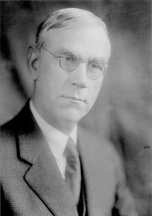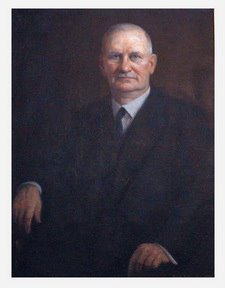(European Economy 1914-2000) Derek H. Aldcroft (2001)
The ponderous, slow response of Titanic's massive girth to a "hard a starboard" helm command is the self-same response of the global business community to the economic downturn of the late 1920's. Except their rush to the bottom was far speedier. At least Titanic took hours to sink. The blunderbuss of 1929 was like a monstrous peek-a-boo show. An entire business world here one minute, and blown into the Bermuda Triangle the next. In particular, Aldcroft notes that heady growth driven from the 1880s period onward and upward to the precipice was punctuated by a pause for Great War follies that suspended normal seven to ten year growth cycles at the top edge of a bottomless economic abyss. In effect the rebuilding period following the war artificially inflated trading to manage the recovery and caused many optimistic speculators involving themselves in the US domestic economy particularly into believing that demand downturns were a thing of the past or that there was further track, that there were bridges to ford an ominous unplumbed gorge ahead. Namely, US domestic outputs were not seeing serious dips, while many European nations were experiencing significant drops in domestic output as in Austria, Germany, France, Czechslovakia, and Poland. News was slow to percolate from the little engines that could not, through the rocketing twisting lines of carriages all attached to one, singular, over-sized financers caboose painted red, white and blue. The song in this case was not "Nearer My God to Thee". There was barely even chance to tootle the first verse of "'Ol' Susanna".
The 1929 crash implicated all forms of trade internationally in shares, commodities prices, exports, and imports. As of 1928, European trade was worth 50 billion annually. As of 1929, it shot down to 20.8 billion. Aldcroft notes that a crash of this intensity, duration, and scope was mostly the result of poor business intelligence, and was not primarily the cause of WW One factors. Call it the curmudgeon factor. Then it is not surprising that the business world was as incapable of managing itself as the military strategists of the world's most expensive global conflict in allowing their own managed tragedy to occur. The poorer classes again suffered direct results this time in record levels of high unemployment as prices fell faster than wages while those who continued to work were quite fortunate. Aldcroft notes European totals of 15 million unemployed as of 1929, with Germans among the hardest hit at 4.5 million and 17,000 business bankruptcies. According to fiscalstudy.com Germany's unemployed numbered 4.638 million as of December 2005. Still again no one seems to be overly concerned other than desirous of removing the collective benefits from those lucky enough to still hold jobs there now.
The acquired influence of the US over the global economy contributed to the 1929 Crash according to Aldcroft. The US responded to economic downturn with two effective shocks which sealed many investors dooms. First, 1928-1929 saw a heavy reduction in foreign lending. Second, the US reached the peak of its cycle in summer 1929. As debtor nations could now acquire few self-liquidating capital infusions, their domestic economies could no longer fuel debt payments to or purchase of goods from the US. As Europe's principal creditors were the US and France these were among the first to decline economically as a result of their own reduced lending. Their eyes were finally on the topic and quite lidless regarding their positions. Debtor nations had little or no gold left to maintain short-term loans extensions. All craws were empty. International investment confidence became as raucously unstable as the lending shock had quite frozen lots of fingers. Defaults and flurries of stockbrokers ensued.
So 1929 could be described as a US lending collapse starting from 1927, net capital outflows are provided by Aldcroft which support this assumption. As a result, domestic flow of exports from the US were reduced to one-sixth of their demand previous to the crash. Its international customers could not furnish stable currencies or gold to make payments or purchases as their vaults were already emptied. Furthermore, currencies speculations and fluctuations had reduced their purchasing powers collectively. Thus with trickling trade balances at 16.6% of previous flow rates, products and commodities prices fell comparatively to 16.6% of their previous prices. It was an economic nightmare and it was global. A sludge pit of epic proportions where all factors mixed together to provide the stickiest quicksands ever created in mankind's blind accounting of capitalist endeavours.
A view on this period is well supported by what Aldcroft writes and as issues of global surplus are also combined to causes of the crash, it is best to remember that in the US especially a construction and consumption peak had been reached. But perhaps extenuated by decades of production where prices had not kept up with higher and higher wages which had fueled its growth as well. The US domestic economy possibly had offered heavy discounts to its own domestic consumers while applying heavy price mark-ups to its international buyers. This would have worked for a while, until price and competitor market entrants drove international prices downward, and corporate domestic interests drove domestic prices upward. If consumers in the US economy could no longer keep ahead of price increases, of course their consumption rates would fall.
Specifically it appears relevant that such a reversal was taking place coincident to US increases in global percentage of gold holdings and the pyramid of debtor and creditor relationships. It is possible to assume that US producers knew full well that their international customers were declining, to the point of no return, and that the second false rise in trade in 1929 might have been due to price adjustments made far too late rather than real demand for their products. Furthermore, FRB rates manipulations following the crash made matters worse than in 1929 as they continued to quell investor confidence in currency markets. So reduced loans to Europe merely led to higher and higher attrition rates in Aldcroft's eyes. Every step that was taken caused a deeper and deeper depressionary plunge.
Suddenly every scale industry on earth had stacks and stacks of product, ready, for an entire market which was completely incapable of purchasing anything. Export values are noted to have fallen faster than import values, but it seems to make little difference to issues of over-supply which looked probably like stockroom explosion. If every nation was consuming at one sixth of previous flows, every import or export business was then sitting on six times normal inventory virtually overnight. There were no European gold reserves left to finance further international loans. No stable exchange currencies either. Absolutely no funds to pay for or ship commodities anywhere even that they were now at throwaway prices or six times cheaper than previously. Even attempts at bartering commodities were a failure as businesses attempted frantically to reduce their fixed costs in an attempt to remedy momentous oversupply. Imagine the Titanic sinking its fifteen kilometres to the bottom, settling, and then being driven a further fifteen kilometres through solid rock due to the weight of creditors pushing down on it.
Forecasting of operations, trade cycles, production cycles, and pricing were realizing a painful birth in terms of relevancy as the entire trading world appeared to be attempting to steel itself through a collective dipping into liquid molten lava. Thus management teams have evolved their hip-pocket calculations abilities steadily ever since probably to avoid a repeat of whole mounds and carcasses of spoiled product being dumped and bulldozered about because of cyclical demands negligence. These were the tides and times from which the world's first and probably best quality management experts literally crawled out from under in the decades following.
So the Americans finally slew Atahualpha, although maybe as late as a "Larry King Live" starring Al Gore and Ross Perot, who it seems is also still one of them, or at least half of one of them, all conveniently sipping their mint juleps in the same drawing and quartering rooms anyway. That rapid deflations, devaluations due to currency fluxes, barriers like Smoot-Hawley, tariffs, and debt defaults took place among former economic allies really did nothing for the global economy for a very long time merely proves that all the optimists had merely disappeared. Real global economic curmudgeons had simply taken full power. It simply remains the easiest way to approportion blame for politicans to account for it on foreign soils. As a result of all of the difficulties, gold standard was abandoned, industrial imports and raw materials declined, the whole trading world was sucked in to the worst dominos match in history. Smoot and Hawley were probably not the worst curmudgeons out there. But they were obviously the most memorable and photogenic. Poster boys for the Great Depression.




No comments:
Post a Comment